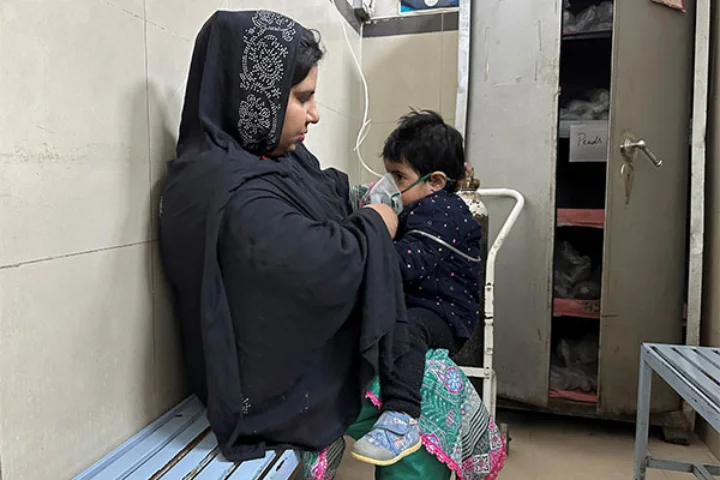

Shazma Qadeer holds a breathing mask for her one-year-old daughter Inaaya (Photo: Reuters)
A major chunk of Pakistan’s population does not have access to primary and basic healthcare. The situation of medical infrastructure in Pakistan is becoming critical, especially for people who need essential medicines and injections like insulin, as the cost of these medicines remains out of their reach, The News International reported.
The same news report in the Pakistani newspaper The News International gave the example of Muhammad Boota and said that the domestic worker in Lahore requires an insulin dose every 10 days. And just one of these injections costs around 40 per cent of his salary. Similar, is the condition of millions in Pakistan as they depend on unreliable charitable donations for their life saving medicines.
According to a report by Pakistani nongovernmental healthcare organization, Sehat Kahani, more than 50 per cent of Pakistanis do not have access to basic primary healthcare services, and approximately 42 per cent have no access to health coverage.
The News International report also said that the conditions could turn worse. The country’s cabinet in February increased the prices of 146 essential medicines, placing many of them even further out of the reach of lower-income people.
This critical situation for the health infrastructure is the sheer lack of government funding. According to 2021 figures, Pakistan’s government spends merely 0.84 per cent of its GDP on healthcare. This is down from the 0.94 per cent of its GDP that it spent in 2019 and less than one-third of the average among other lower-middle-income countries of 2.62 per cent.
The News International report further stated, in 2021, out of 189 countries, Pakistan came in at number 176 on the amount of money the government spent on healthcare when measured relative to the size of its economy. Pointing out that the government has not made funding for healthcare a priority.
To top it all off, a human rights organization from Pakistan had raised a demand to make Right to Health a constitutional right in its campaign titled ‘The Right to Health A people’s Manifesto’.
The country faces such a crisis because of soaring poverty, inflation, and unemployment, as the country faces one of the worst economic crises in its history. In other domains, Pakistan’s population was suffering from one or the other crisis even before the current turmoil, the news report claimed.
A report by the World Food Programme estimated that in 2018, 21 per cent of Pakistan’s population was undernourished and 44 per cent of children under the age of five had stunted growth. The Asian Development Bank reported that for every 1,000 children born in Pakistan in 2020, 65 would die before their fifth birthday. Almost 25 per cent of the population did not have access to electricity in 2020. Additionally, the country also remains affected by one of the most severe climate change crises.
Volker Turk, the UN High Commissioner for Human Rights, on June 17 expressed concern over…
Prime Minister Narendra Modi addressed the G7 Outreach Session on the theme 'Energy Security: diversification,…
Prime Minister Narendra Modi held a telephonic conversation with US President Donald Trump on the…
The launch of Axiom Mission 4, the fourth private astronaut mission to the International Space…
The Embassy of Iran in India on Wednesday shared a statement made by the Director-General…
India and Canada agreed to resume full diplomatic services, ending the thaw between the two…